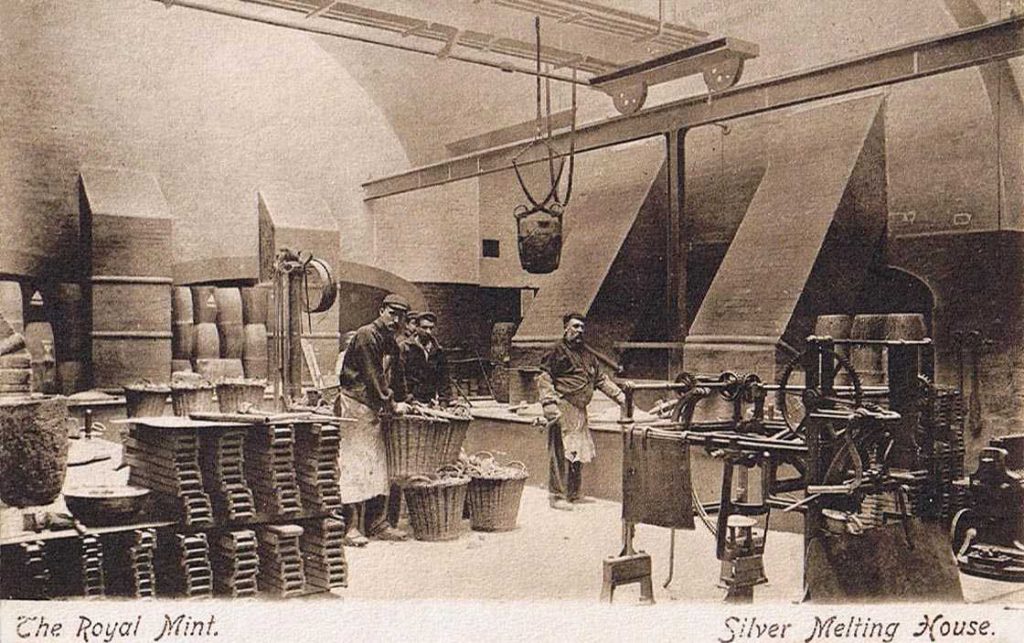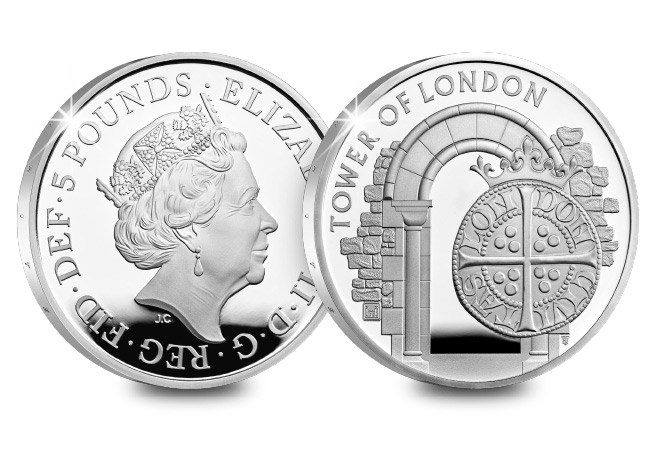Posts Tagged ‘The Royal Mint’
Will this Heraldic Beast follow the SELL-OUT History?
Today, The Royal Mint have finally unleashed a BRAND-NEW UK 2023 coin to celebrate the most peculiar piece of the mighty Tudor dynasty: The Yale of Beaufort!
Join me and travel back to Henry VIII’s England to discover the origins of the Yale itself, what makes it the most eccentric creature in the Royal Tudor Beasts series so far, and how you can secure it in your favourite specification!

Landing in Tudor England…
If you have ever had the fortunate opportunity to visit Hampton Court Palace, you will know the heraldic creatures as more than just the reverse design of the Tudor Beasts coins. In fact, the stone sculptures of these ten formidable beasts that guard the Moat Bridge are one of the first things guests will see! However, back in the early 16th century, they were used for more than just spectacle…
In fact, they were originally erected to establish Henry VIII’s power and guard his right to rule.

The Series
To commemorate the heraldic importance of these royal protectors, The Royal Mint’s regal ten-part Royal Tudor Beasts series feature reverse designs of the mythical creatures who represent the lineage of Henry VIII and his third wife Jane Seymour.
2022 saw the launch of the first coin in the series, The Seymour Panther. Symbolic of the strong union between Henry VIII and Jane Seymour, this coin SOLD-OUT in FIVE specifications!
The second coin of the collection, which features the oldest and most iconic beasts in heraldic art – The Lion of England – draws upon imagery of courage from as far back as the twelfth century!
And finally, the third coin in the series emphasises the most peculiar royal protector of them all: The Yale of Beaufort. With an antelope-like body, lion’s tail, and tusks of a boar, you can see why this creature is the most striking…
Yale of Beaufort
The Yale of Beaufort, the third beast to feature on the UK Tudor Beasts coin series, was closely associated with the powerful Beaufort family and helped to reinforce Jane Seymour’s authority and influence as the king’s new wife. If you look closely, you can see the creature holding the Arms of Jane Seymour…

The Yale of Beaufort £5 BU Pack
Created in collaboration with the experts at Historic Royal Palaces, this coin is available in the collector’s favourite specification – Brilliant Uncirculated quality – to ensure it is free of the marks and scratches found on regular circulating coinage.
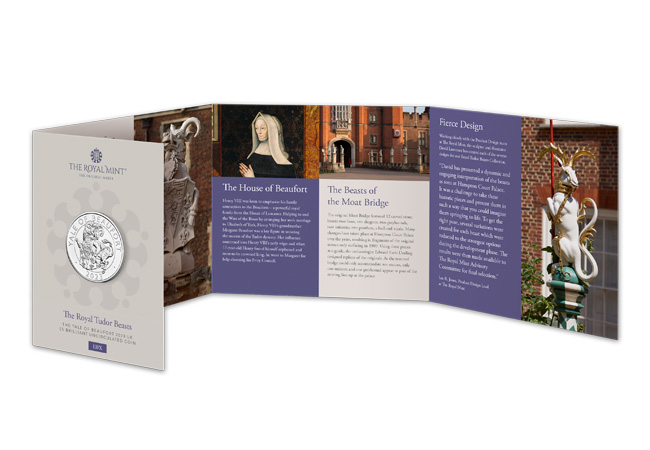
What’s more, each £5 coin will arrive protectively sealed in a bespoke Royal Mint presentation pack which delves deeper into the Yale of Beaufort’s history and heraldic importance!
Click here to secure yours at the official Royal Mint price of JUST £13 >>>
The EXTREMELY LIMITED 1oz Silver Proof edition
Struck from .999 silver to a stunning proof finish, David Lawrence’s imaginative reverse design is brought to life with such detailed minting!
However, The Yale of Beaufort 1oz Silver Proof coin has only 5,000 available worldwide, meaning it is 20% more rare than the previous Tudor Beasts’ release.
In fact, I have one more warning for you…
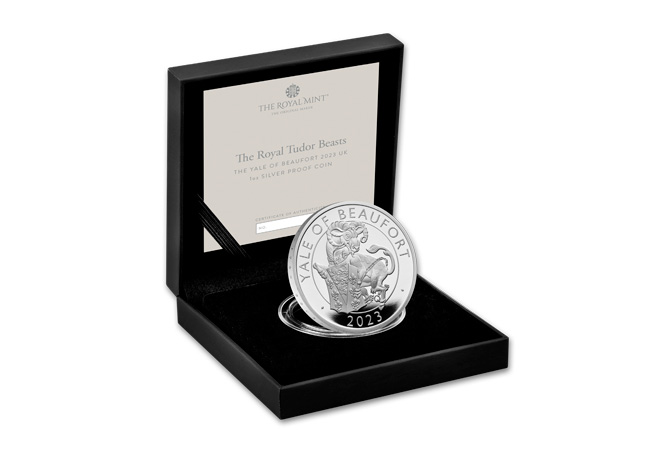
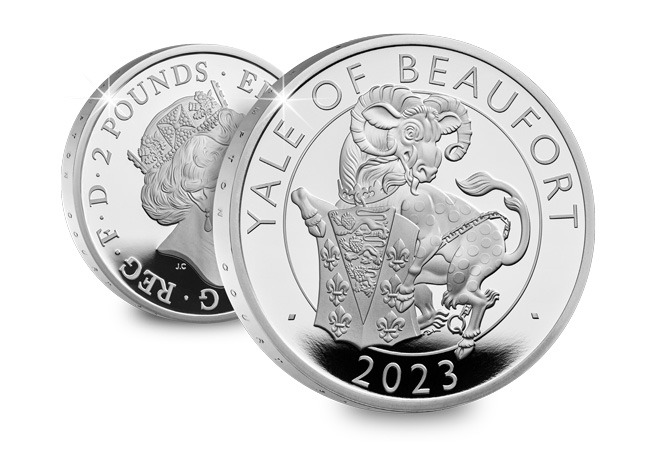
We only have 300 available for our most dedicated collectors!
To put this into context, the UK 2022 Seymour Panther coin’s larger worldwide edition limit of 6,000 SOLD-OUT within mere hours of release at The Royal Mint!
So, click here to see if there’s one left for you at JUST £95 >>>
JUST ANNOUNCED: The UK’s first Pride 50p!
A brand new 50p is being released by The Royal Mint to mark the 50th anniversary of Pride!
Back in December 2021, The Royal Proclamation announced plans for a Pride 50p, and today the first details of this coin’s release have been revealed — including the design!
The Design

Designed by LGBTQ+ activist Dominique Holmes, this new 50p design features five rainbows — each accompanied with part of the inscription, “PRIDE PROTEST VISIBILITY UNITY EQUALITY”. It’s scheduled for release this summer, coinciding with Pride celebrations across the country.
A Collecting First
Collecting firsts are without a doubt some of the most popular coins released. They become much harder to source in the coming years, often seeing sell-outs across whole ranges! And, as the FIRST ever 50p released in honour of Pride, this coin is likely to be incredibly popular with collectors.
The coin will be available in multiple specifications, including the standard Brilliant Uncirculated and the stunning colour Silver Proof, adding apt depth and vibrancy to the design. For the ultimate collector’s item, it’s also available in Gold Proof too.
High Demand Expected
As well as being the very first UK coin to commemorate Pride, this coin also marks the 50th anniversary of the first UK Pride march, held in London, 1972. Pride in London 2022 will pay tribute to this by retracing the historic 1972 route around London.
Pride in London now attracts a huge crowd, with 1.5 million walking in the 2019 procession, with hundreds of thousands more attending other Pride events across the UK.
After a two-year hiatus due to COVID-19, this year’s Pride events are expected to be more popular than ever — and with so much interest in this year’s events, this UK-first 50p coin is expected to be in high demand.
If you want to ensure you don’t miss out on owning the very first UK Pride 50p, make sure you sign up below for updates on this coin’s release.
Tales from The Tower’s maximum security Mint – where making coins was a dangerous business
A symbol of royal power for nearly 1,000 years, the Tower of London remains one of Britain’s most iconic attractions.
But did you know that for over 500 years The Tower of London housed The Royal Mint?
It’s safe to say that during The Royal Mint’s time in The Tower, making coins was hot, noisy and dangerous affair. So much so that tampering with coins was considered treason, and the threat of gruesome punishment alone was enough to deter most, if not all, forgers and thieves.
For me, there’s no coin stories as fascinating as the ones that originate from The Royal Mint’s time a at The Tower. Here’s a selection of my very favourite ones…
Health and Safety was not a concern
In stark comparison to the society we live in today, the health and safety of Mint workers was not a top priority during the Mint’s time in The Tower.

Mechanisation in the 1600’s was welcome relief for Mint workers, as up until this point, all coins were made by hand. As a result, it wasn’t unusual for workers to be injured, and the loss of fingers and eyes was not uncommon.
When it came to striking the coins, split second timing and staying alert could mean the difference between making a coin and losing a finger! That’s because in order to strike a coin, one worker would place a handmade piece of metal between two engraved stamps – called dies – and a second worker would then strike it with a hammer. This procedure would stamp the coin design on to the metal, but if both parties were not on the ball sometimes a finger would be removed in the process.
Even then, it actually wasn’t until screw-operated presses were introduced in the 1700’s that life for Mint workers became relatively safe.
Dirty, deadly money
Working in the Mint was dirty and dangerous work. Huge furnaces were used to melt down precious metal, and the air was full of deadly chemicals and poisonous gases. This made the coin making process a real hazard.
In the 1560’s a group of unfortunate German workers learned this the hard way. Several of them were suspected to have been poisoned by clouds of noxious gas, and they fell incredibly ill. Seasoned workers at the Mint advised them of the cure – to drink milk from a human skull! Despite the so called ‘cure’, several men died.
The mysterious case of Sleeping Beauty
Several decades prior to this, in the 1540’s, William Foxley was another victim of the Mint’s lax health and safety. Though how exactly, still no one to this day knows for sure! Foxley was a potter at the Mint, and one day he fell asleep over his pots and no one could wake him up.
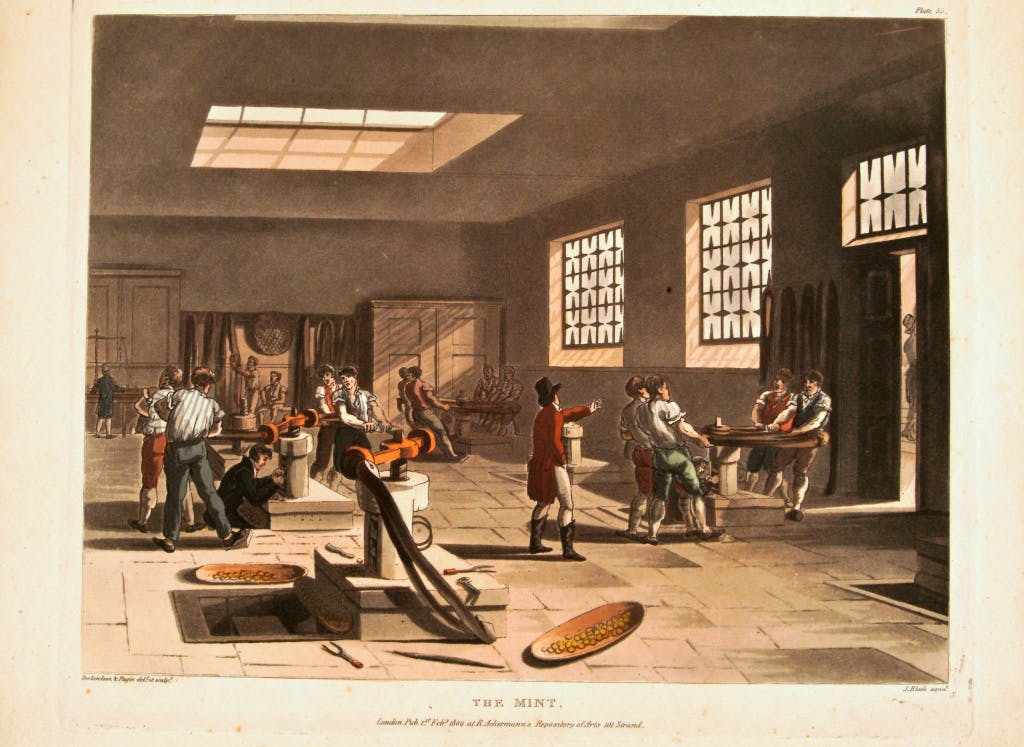
It’s unclear what exactly caused Foxley’s coma, and allegedly King Henry VIII himself swung by The Tower to check out the mysterious sleeping beauty. For the majority of the British population, the only way they knew what their monarch looked like was thanks to the obverse of the coin. So Foxley will have been disappointed to have slept through his audience with the King.
This case perplexed physicians for 14 days, after which Foxley woke up and was the picture of perfect health. Remarkably he lived for another 40 years.
Tampering with coins was considered treason
Treason was not taken lightly. In fact any tampering with coins, such as shaving silver from the edge of a coin to steal it, was classed as treason and the severe punishments that awaited thieves and forgers was nearly enough in most instances to put them off.
During medieval times, the sentence for a first-time convicted counterfeiter was to remove their right hand. Any second offences were punishable by castration. It’s unknown exactly what followed this particularly gruesome punishment for a third or even a fourth offence.
But if you think this is severe, in later years and right up until the 1700’s male forgers suffered a traitor’s death – that is to be hung, drawn and quartered. Meanwhile, female forgers were either burned at the stake or transported on one of the infamous convict ships to their designated place of exile.
If you’re interested…
The Royal Mint has just released a BRAND NEW UK £5 coin to celebrate its longstanding and fascinating history with The Tower of London.
The coin is available in a range of specifications, including Brilliant Uncirculated and extremely limited edition Silver Proof and Silver Proof Piedfort. Given the historical significance of this commemorative, it is expected to be highly sought-after by serious collectors now and in years to come. That said, we do not expect to be able to offer it for long.

